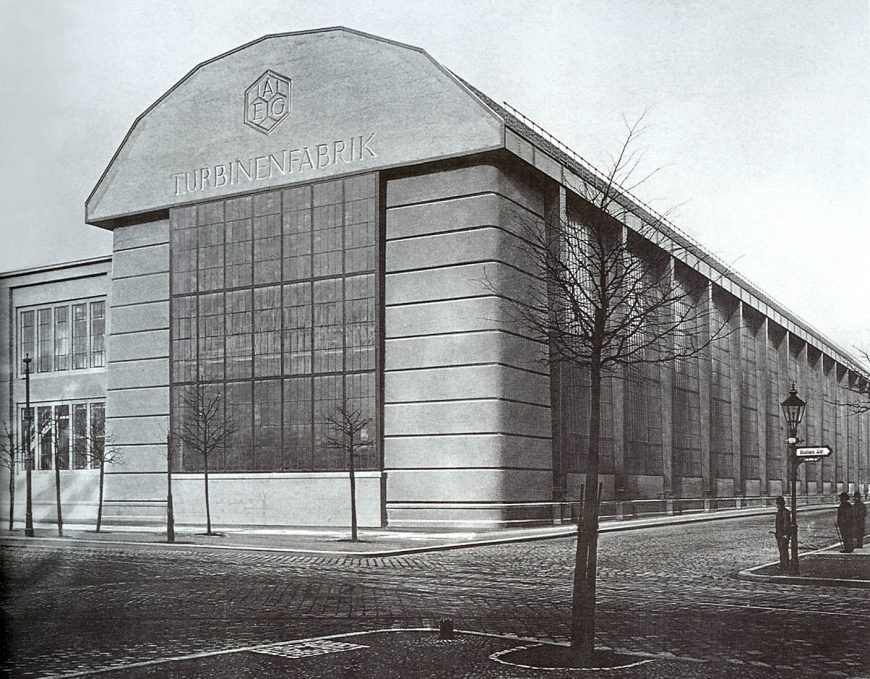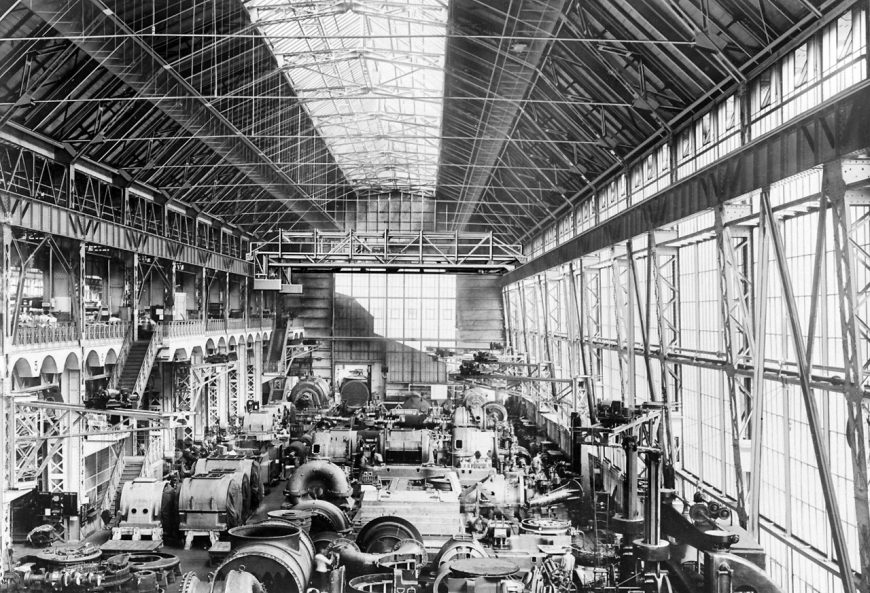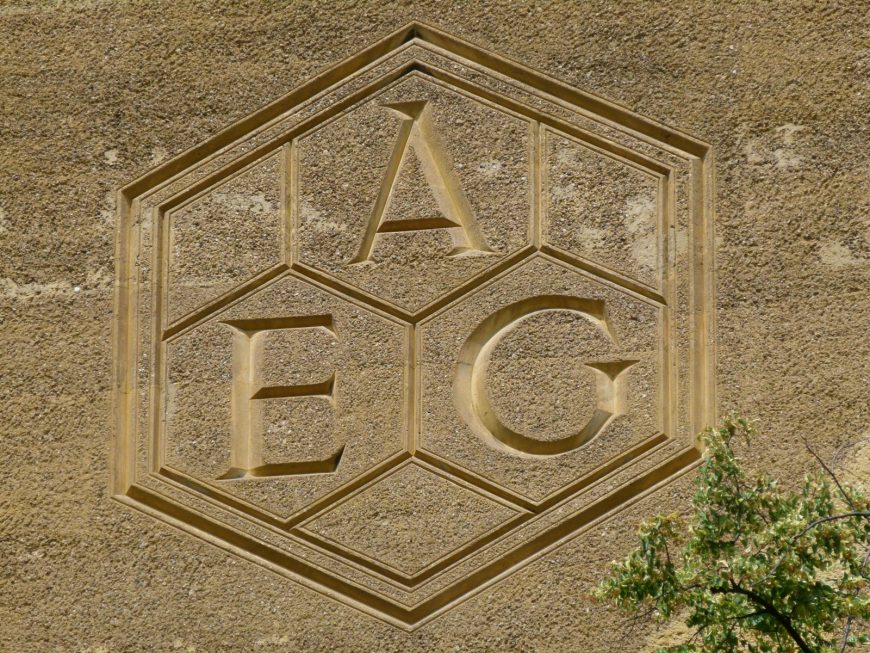Peter Behrens, Turbine Factory
by DR. ELIZABETH M. MERRILL[1]

The establishment and evolution of AEG—the initials for the German Allgemeine Elektricitäts-Gesellschaft, or General Electric Company—was quintessentially linked to the rise of modernism. Founded in Berlin in 1883, AEG pioneered modern, large-scale industrial development. In 1887, having purchased several patents from Thomas Edison, the firm began producing electric light bulbs. Just over a decade later, AEG was not only one of the fastest growing companies in Germany, but a world-leader in the production of generators, cables, transformers, motors, light bulbs, and arc lamps.
AEG Turbine Factory
Located in the Moabit district of Berlin, the AEG Turbine Factory was Behrens’ first factory design. The structure was to house the production of steam turbines—engines that use pressurized steam to generate electricity—a rapidly growing industry in the early-20th century Germany, as the country’s maritime power developed in rivalry with that of Britain. The essential contours of the factory—a steel-frame rectangular structure, approximately 122 meters long, 40 meters wide and 26 meters tall—were specified by AEG’s turbine fabrication director Oscar Lasche. The main assembly hall had to accommodate two large cranes, capable of lifting 100 tons and installed at such a height that the largest turbine parts could be lifted over the machines on the assembly floor. Smaller, flanking constructions were also necessary for storage and secondary manufacturing operations, and it was imperative that railroad cars enter directly into the work space.

As a self-taught architect, untrained in engineering, Behrens was willingly reliant on the expertise of Lasche and other talented engineers when it came to the building’s materials and structural dimensions. But as an artist, Behrens was able to give form and meaning to the factory in way that eluded the engineers. Behrens saw the Turbine Factory as a symbol of modernism, and its attributes of speed, noise and power. He wanted to make the interior and exterior as simple as possible, and in collaboration with the engineers chose to use fewer, but more massive girder frames than was commonly employed in such a large building. The AEG Turbine Factory was to be a temple dedicated to a new age of production. The classicism evoked in its reinforced concrete, pedimented façade was not of bygone traditions, but a new classicism that expressed the industrial advances that were reshaping contemporary life.

The monumental iconic façade—at the center of which stood Behren’s hexagonal logo for the AEG—was also to become the company’s corporate face. It is here that we can best recognize how Behrens used symbolically-charged forms to create new functions. In its materiality, the concrete façade serves no structural purpose. But in its mass, it accomplishes what the elongated steel beams of the structure’s skeleton does not. The Turbine factory was not Germany’s first major iron and glass building, nor was it the country’s first industrial construction. It was unprecedented because it served as a cultural icon of modern industrial power. It expanded the realm of the architect’s work and established new guidelines for mass-production.
Additional resources:
Stanford Anderson, Peter Behrens and a New Architecture for the Twentieth Century, Cambridge: The MIT Press, 2000.
Tilmann Buddensieg, Industriekultur: Peter Behrens und die AEG, 1907 – 1914 (Berlin: Gebr. Mann, 1990).
Frederic Schwartz, “Commodity Signs: Peter Behrens, the AEG, and the Trademark,” Journal of Design History, vol. 9 (1996), pp. 153–184.
Alan Windsor, Peter Behrens. Architect and Designer (London: The Architectural Press, 1981).
- Dr. Elizabeth M. Merrill, "Peter Behrens, Turbine Factory," in Smarthistory, March 7, 2016, accessed March 2, 2023, https://smarthistory.org/peter-behrens-turbine-factory/. ↵

